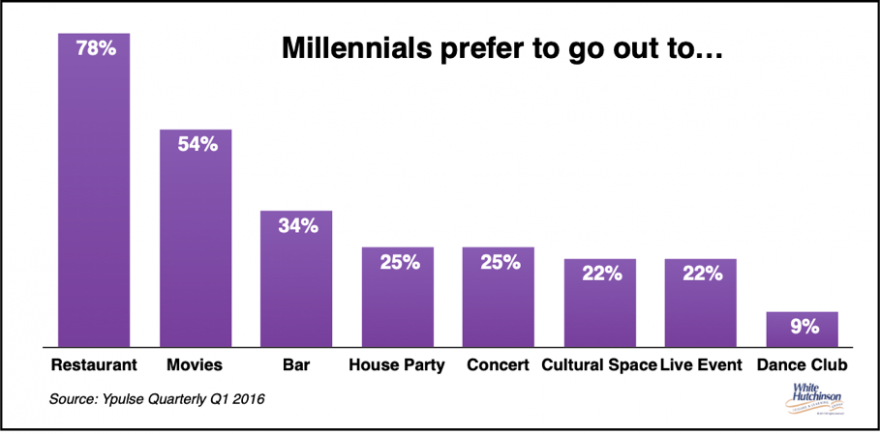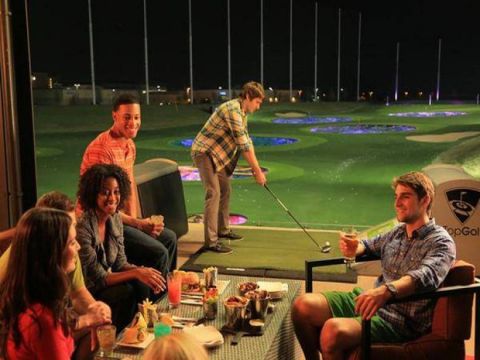
Vol. XXIII, No. 9, September 2023
The new paradigm for community location-based entertainment venues
Society and culture have evolved based on the growth, advancement, and adoption of technology, demographic changes, generational shifts, changed economic conditions, and changing values. Many of these changes were accelerated by the pandemic. As a result of these changes, the formula for success today and into the future for community location-based entertainment venues (LBE) has shifted to a new business model paradigm. One of the most significant changes is that the entertainment attractions have become secondary. Secondly, the LBEs are no longer family-oriented like family entertainment centers (FECs). Instead, they target adults, typically adult Gen-Z and Millennials.
It's an oxymoron to call them entertainment venues since it's no longer primarily about entertainment. The new successful concepts aren't calling themselves entertainment venues. Many call themselves "competitive socializing," an oxymoron we'll discuss later in this article. Many have "social" as part of their brand names. Our company has named the new LBE category "social gaming eatertainment*," which better captures their character. There's a breakdown of their essential elements.
Socialization
We humans are hardwired to seek out real-world social interactions and connections. As evolutionary anthropologists will tell you, it was living in a family and tribe, with all its social interrelationships, that bonded members and enabled our species to survive and prosper over our 200,000-year history. Social interaction is a basic need, a fundamental part of our humanity. The need to socialize is built into our DNA.
In her book The Village Effect , psychologist Susan Pinker argues that humans need face-to-face contact just as much as they need air and water. She says that quality face-to-face contact is essential for a social species. Her research shows it is crucial for learning, happiness, resilience, health, and longevity.
Social games
Participating in social games enhances the social experience. Social games are different than competitive games. Competitive games have a high skill level variance, meaning it takes a lot of practice to learn how to play and be good at it. The higher the skill level variance, the less likely a casual player will try the game. Low skill level games are easy and quick to learn how to play. With a bit of practice, you can play against another player who already knows how to play. You might not win, but you don't feel like they are dramatically better, and you feel like you have a chance to win, especially with just a few more times.
Novices face a painful learning curve with high skill level variance games. They will likely get beaten badly by even lower-level players who already know how to play. High skill level variance gaming experiences can make inexperienced players feel incompetent or even embarrassed due to their lack of ability to successfully play the game.
Social games are played by a small group of people who don't have to be experienced players. The games that work have a particular rhythm where one person plays while the other people watch, converse, socialize, validate the play of each other, and enjoy food and drinks. There is light-hearted competition that isn't taken very seriously. Low skill level games create an enjoyable social experience for all players.
Food & beverages
Sharing food and beverages, dining and drinking together is one of the best tools for creating social interactions. Setting aside drive-thru and fast-food restaurants, which are only about refueling, most groups dine for the social experience as much as, if not more so, than the sustenance.
It all goes back to early humankind sitting around the primal campfire as a group and eating that day's kill while socializing. We are programmed by evolution to socialize around food and beverage.
This importance, the attraction of social dining and drinking, is confirmed by research by Robin Dunbar at the University of Oxford's Experimental Psychology Department in his paper, Breaking Bread: The Functions of Social Eating. His study found that social eating makes us feel happier, more satisfied with life, more trusting, and bonded to others when we socially share a meal. He also concluded that meals at which laughter and reminiscences occur and alcohol is drunk are especially likely to enhance feelings of closeness.
Our CEO tells us, based on his extensive international work with clients in 37 countries and his other world travels, that humans have a hard time socializing unless they have a drink in their hand (in the West, it might be alcoholic; in the Middle East it might be tea), and/or are eating something.
We now live in the foodie era of adventure and discovery where dining and drinking out is considered a fun, social experience, even qualifying as an entertainment experience, often with more appeal than traditional entertainment venues. A YPulse pre-Covid survey found that nearly 8 in 10 Millennials (78%) prefer going to a restaurant more than other options, including various entertainment venues.

Food and drink is top-of-mind, a passion, a hobby for most 20- and 30-somethings who self-identify as foodies. Even older adults are looking for adventure and discovery with new and unique dining experiences.
The best social gaming eatertainment venues feature destination-worthy, trend-forward, foodie-worthy, globally-inspired menus with sharable dishes and curated beverage and alcoholic selections. The food and drink never play second fiddle to the participatory social games. Instead, it is as important, if not more so. Typically, food and beverages generate more than half of the revenue.
The synergy of the combination
At social gaming eatertainment venues, people simultaneously enjoy high-quality, foodie-worthy food and beverages while playing social games. While one person plays, the other group members watch, converse, comment on the play, and enjoy food, typically sharable dishes and beverages. The combination of enjoying the food and beverages while playing a social game creates a high-fidelity, "social bonding," and memorable experience that cannot be replicated by a simple restaurant or typical entertainment venue experience (that might serve food and beverages after the play) alone.
These centers include places such as Topgolf, Your 3 rd Spot, Flight Club, TOCA Social, some golf simulator centers like Topgolf Swing Suites and Five Iron Golf, as well as many contemporary upscale bowling centers, especially duckpin bowling that has a lower skill level variance than ten pin bowling.

Let's look at Topgolf, one of the earliest LBE chains to adopt the social gaming eatertainment formula. The popularity of golf has been on a long-term decline in America, losing about one-half million players per year over the past decade. With a shrinking market size, golf is not exactly an industry in which you want to open a new concept. Well, actually, yes, it is if you understand how to use the social gaming eatertainment formula to attract younger non-golfers rather than just traditional golfers.
That is precisely what Topgolf has achieved. Two-thirds (64%) of their guests are between 18 and 34, an age range for one-fourth of golfers. This is because the majority of their customers are not golfers. Topgolf turned whacking a golf ball into a low-skill level game like mini golf. 60% of Topgolf customers consider themselves new to the game; it's not the golf that brings them. CEO Ken May said, "The Millennials are there to have fun, not necessarily to get good at golf." Playing golf is secondary to partying and socializing with friends for Topgolf's customers. Food and beverage are vital as they make up more than one-half of Topgolf's revenues. Their menu wouldn't seem out of place in a New York gastropub. Drinks, food, music, and friends make Topgolf a social experience rather than a golf experience.
Topgolf created three levels of golfing bays where groups of up to six people can eat, drink, listen to music, or even watch TV and maybe take a swing at a ball on the driving range.
Topgolf has over 70 U.S. locations, each generating around $18 million in annual revenue. They target affluent markets with upscale younger adults earning at least $100,000 annually. There are now imitators of Topgolf, such as T-Shotz, Drive Shack, and Great Shots.
Our company is pleased to be at the forefront of researching and identifying these and other trends impacting today's and tomorrow's out-of-home leisure culture. We take seriously the need to develop projects for our clients that can compete in the future, not just in the present. That is why we make such a significant investment in trends research that we can apply to designing and producing future-proof projects for our clients.
*For a while we were naming the venues "social participatory eatertainment," but have finally decided "social gaming eatertainment" is the best fit.
Additional reading:
Subscribe to monthly Leisure eNewsletter


